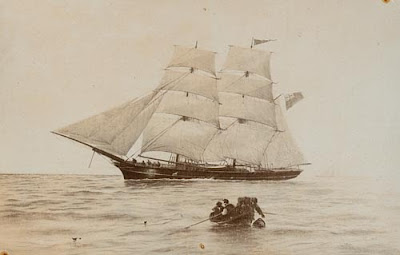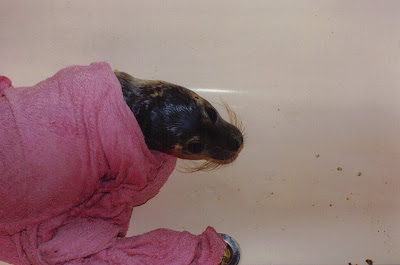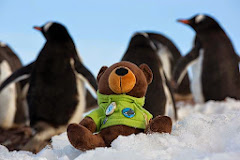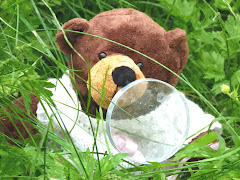Hi all
I am still here in the UK and my preparations to travel are almost complete. Yesterday I helped Steve run a course on sharks - and I learnt a lot too.

The aim of the course is to challenge children's perceptions about sharks, to show children that while sharks may not be the dangerous man-eater that everyone thinks, the truth is actually more amazing (hence the title, "The Amazing World of Sharks").
Right at the beginning of the morning we asked the children to do a "true or false" quiz. These included statements such as "sharks only live in saltwater", "Sharks eat about 200 people a year", "Great white sharks are endangered", "shark meat is poisonous to eat"and "sharks are the most dangerous animals in the sea". We did not tell the children what the right answers were, they would find out during the course (and we would test them again at the end of the day).
The children discovered the many different species and how they use different methods for catching and eating a wide range of food. We also gave them a food web activity. In two groups the children constructed the food webs (using clues on the reverse side of the cards) and then used these finished food webs to complete an activity sheet.

The children were also asked to explain what would happen to the great white shark if the mackerel disappeared because of overfishing.

We wanted the children to understand how important sharks are in marine food webs for keeping them healthy and in balance.
We also encouraged the children to think about how dangerous sharks really are. We used a fun quiz that helps to put into perspective the likelihood of being attacked and killed by a shark.

Again we used a series of questions that included "are you more likely to be killed by an elephant or a shark", "are you more likely to be killed by a coconut than a shark".

The first question in the quiz is how many people are killed by sharks each year (the actual answer is between 5 - 15). The last question is how many sharks are killed by humans each year (the answer is over 1 million). This really surprised the children and me as well. I am hoping to see some sharks on my journey and hopefully help raise awareness.
We asked the children to suggest how and why humans kill sharks, their answers included "out of fear" "for sport and jaws as a trophy", " to eat".

 One of the worst thing people do to the sharks is to kill them for their fins to make shark fin soup. The sharks are caught and the fins cut off and the rest of the shark thrown back into the sea, sometimes while it is still alive. Its unbelievable how cruel some humans can be.
One of the worst thing people do to the sharks is to kill them for their fins to make shark fin soup. The sharks are caught and the fins cut off and the rest of the shark thrown back into the sea, sometimes while it is still alive. Its unbelievable how cruel some humans can be.
To end the course on a more happier topic we finished off by showing the children how scientists are studying sharks so we can understand more about these beautiful fish and how public aquarium, authors and educators are all playing their part to raise awareness of sharks so hopefully we will treat them better in the future.

Steve showed the children some picture of great white sharks leaping out of the water. They do this when they speed up from the sea bed to catch seals on the surface. This only happens in a few places in the world and is really spectacular.
The children were very lively and enthusiastic and I think they all enjoyed their day. It was good practice for me also as I may well meet some school children on my travels and Steve will not be with me then.
I hope you have enjoyed finding out about sharks too.
Ed
 This is what they look like inside the egg case. You can sometimes see them in public aquariums.
This is what they look like inside the egg case. You can sometimes see them in public aquariums. He hatches them out in a fish tank and then returns them to the sea. When they hatch out they are miniature replicas of the parents.
He hatches them out in a fish tank and then returns them to the sea. When they hatch out they are miniature replicas of the parents. There was a steady supply of timber from the trees that covered the chalk hills to the North - the South Downs. They could be floated down river to Shoreham and sawn up to make the ships. Over the years vessels were made for trade, to combat piracy and some took part in major sea battles against the Spanish Armada and during the 100 Year War. In the 1800's, the Victorian Period, there was an industrial Renaissance. Wooden sail vessels were no longer required, now it was the age of iron and steam.
There was a steady supply of timber from the trees that covered the chalk hills to the North - the South Downs. They could be floated down river to Shoreham and sawn up to make the ships. Over the years vessels were made for trade, to combat piracy and some took part in major sea battles against the Spanish Armada and during the 100 Year War. In the 1800's, the Victorian Period, there was an industrial Renaissance. Wooden sail vessels were no longer required, now it was the age of iron and steam. 






 You can find out more about these sea mammals, including the seal tagging project, on the following weblink
You can find out more about these sea mammals, including the seal tagging project, on the following weblink At the end of the last ice age this ice melted and since then Scotland has been slowly rising. This also means that the south coast (including Shoreham) is slowly sinking to its original level. This is only about 2 or 3 mm a year, which doesn't sound much. However, if sea levels are also rising by 2 to 3 mm a year because of global warming, the sea may actually be rising by as much as 6 mm a year.
At the end of the last ice age this ice melted and since then Scotland has been slowly rising. This also means that the south coast (including Shoreham) is slowly sinking to its original level. This is only about 2 or 3 mm a year, which doesn't sound much. However, if sea levels are also rising by 2 to 3 mm a year because of global warming, the sea may actually be rising by as much as 6 mm a year.
 May 2009
May 2009 






